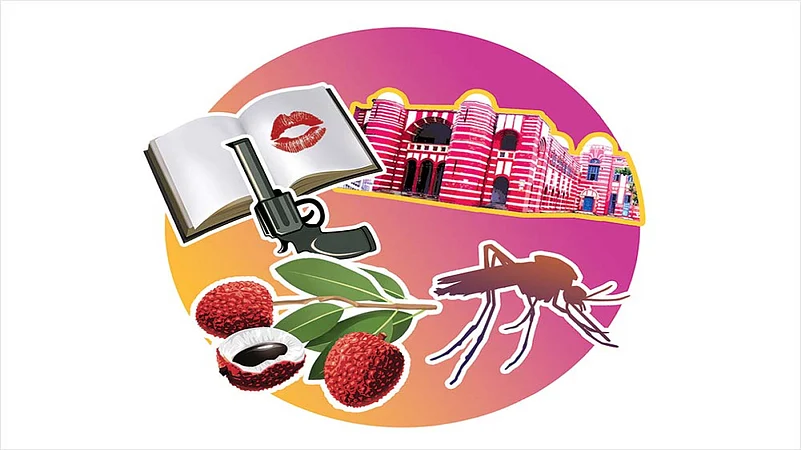If a sleepy town where you spent your late teen years is called the most unlivable place in the country, you are bound to be offended. More so, if that is where you found your first crush to be reciprocal, learned the art of giving pleasure to yourself and bunked a math test at school to ogle, wide-eyed, a blink-and-miss topless scene in the morning show of Texas Detour at a seedy theatre. A place where you stumbled on all adolescent delights, eons before the Brazzers came: vernacular classics with no-holds-barred details about the human anatomy, written and pictorial, available for a pittance on a pavement just behind school. How on earth can my city of so many joys be placed at the bottom on the Ease of Living Index 2020? Even Dahod, Kavaratti and Thoothukudi—places I never knew existed—are ranked higher. I hereby reserve my right to sue the surveyors. Just need an attorney to fight my case pro bono to restore the dignity of a lovely place called Muzaffarpur.
Life may be a bit chaotic today in North Bihar’s largest commercial city for weaker and impatient souls. It needs an enormous amount of patience to navigate its serpentine snarls in peak hours that will make Bangalore’s traffic feel like a breeze. Town and planning have been antithetical terms here since time immemorial. The municipality may have existed since the late 19th century, but perennially open, stagnant drains can be an assault on the olfactory sense of even a Covid patient. Little wonder, it is called Machchharpur—city of mosquitoes—by self-deprecating local wits. But then, wasn’t Muzaffarpur found to be among the most backward districts about a decade-and-a-half ago? Bihar had a double-digit growth rate in this period, but the winds of change bypassed the city. And, pray, whatever happened to the ambitious Smart City project? The latest ranking proves that its Narak Nigam, err…Nagar Nigam still has a lot to spruce up.
Like any other Bihar town, Muzaffarpur presents a picture of contrasts. It has been both a hunting-ground of trigger-happy bahubalis, as well as a nursery for eminent litterateurs like Rambriksh Benipuri and Janaki Ballabh Shastri. From playing host to Gandhi while he was on the way to Champaran in 1917 to sending George Fernandes to Parliament from prison after the Emergency in 1977, it has had a glorious past. It was here that revolutionary Khudiram Bose went to the gallows defiantly in 1908 and it was at L.S. College, founded in 1899, where Dr Rajendra Prasad, Acharya Kripalani and Dinkar taught. Its majestic building was designed after Oxford’s Balliol College during the First World War years. True, it once went by the squirm-worthy name of Bhumihar Brahman College but it also remains a living testimony to the fact that the city was not that “unlivable”.
Muzaffarpur has had its quota of woes lately. The horrendous assault of girls at a local shelter home by the very people who ran it slandered the cultural capital of Bihar. Frequent reports of trafficking of girls at Chaturbhuj Sthan, the biggest red light area between Varanasi and Calcutta, continue to thwart the valiant initiatives to help sex workers. Located in the heart of the city, Chaturbhuj Sthan once housed great classical singers and dancers who drew connoisseurs from far and wide, before it degenerated into a hub of flesh trade.
And yet, I could not care less about the flaws of my favourite city. There is at least something succulent that redeems it: its litchis. As the cliché goes, there are two kinds of people: those who have tasted its Shahi litchis and those who have not. Unfortunately, unlike apples, litchis perish faster than Ram Gopal Varma’s new films. The poor fruit has lately been blamed as the root cause for Acute Encephalitis Syndrome, a mystery disease that has caused the death of many children. Anybody who has spent a lazy afternoon in a litchi orchard in scorching May-June knows it to be sheer nonsense (if not an international conspiracy!) intended to malign the city. The city is officially named after Muzaffar Khan but somebody tells me that its original name was Mudfalpuram, the place that gives the fruits of joy. One wonders why there has been no demand yet to change its name. Maybe residents still prefer to invoke a lowly revenue collector from the days of the British Raj to using a tongue-twisting ode to their most prized possession.


























